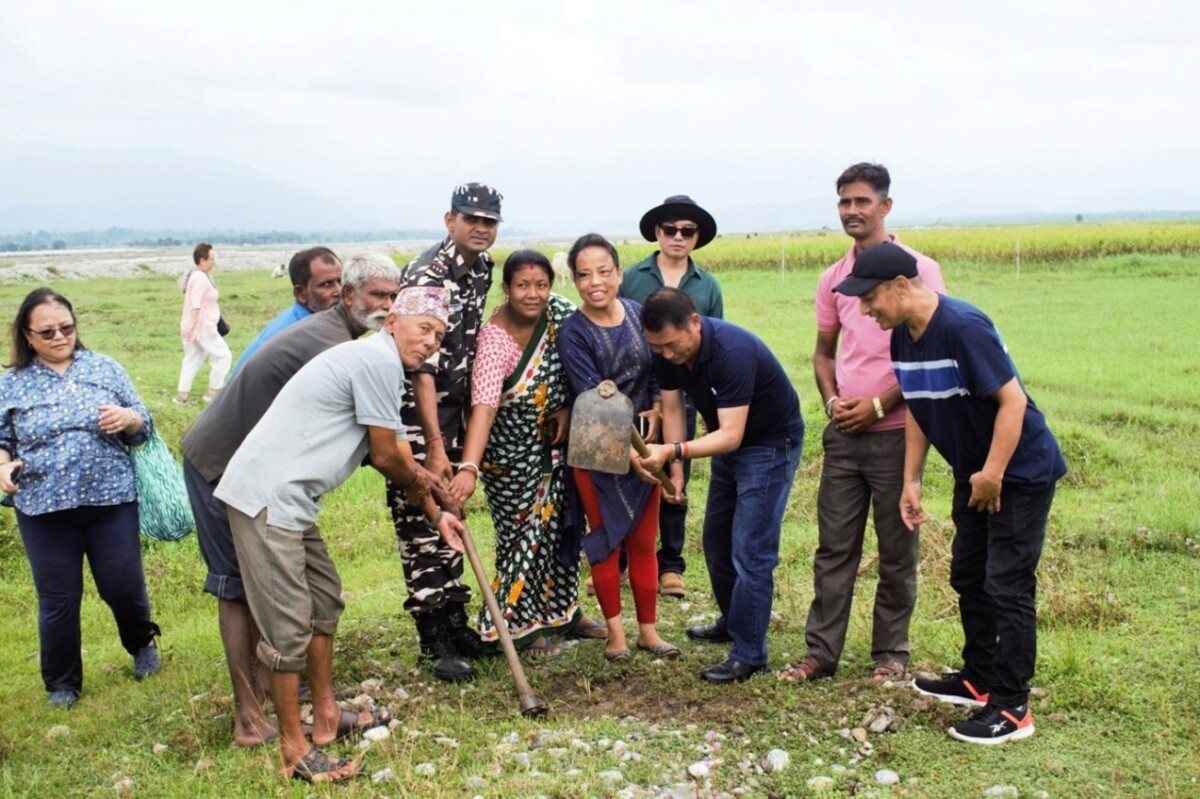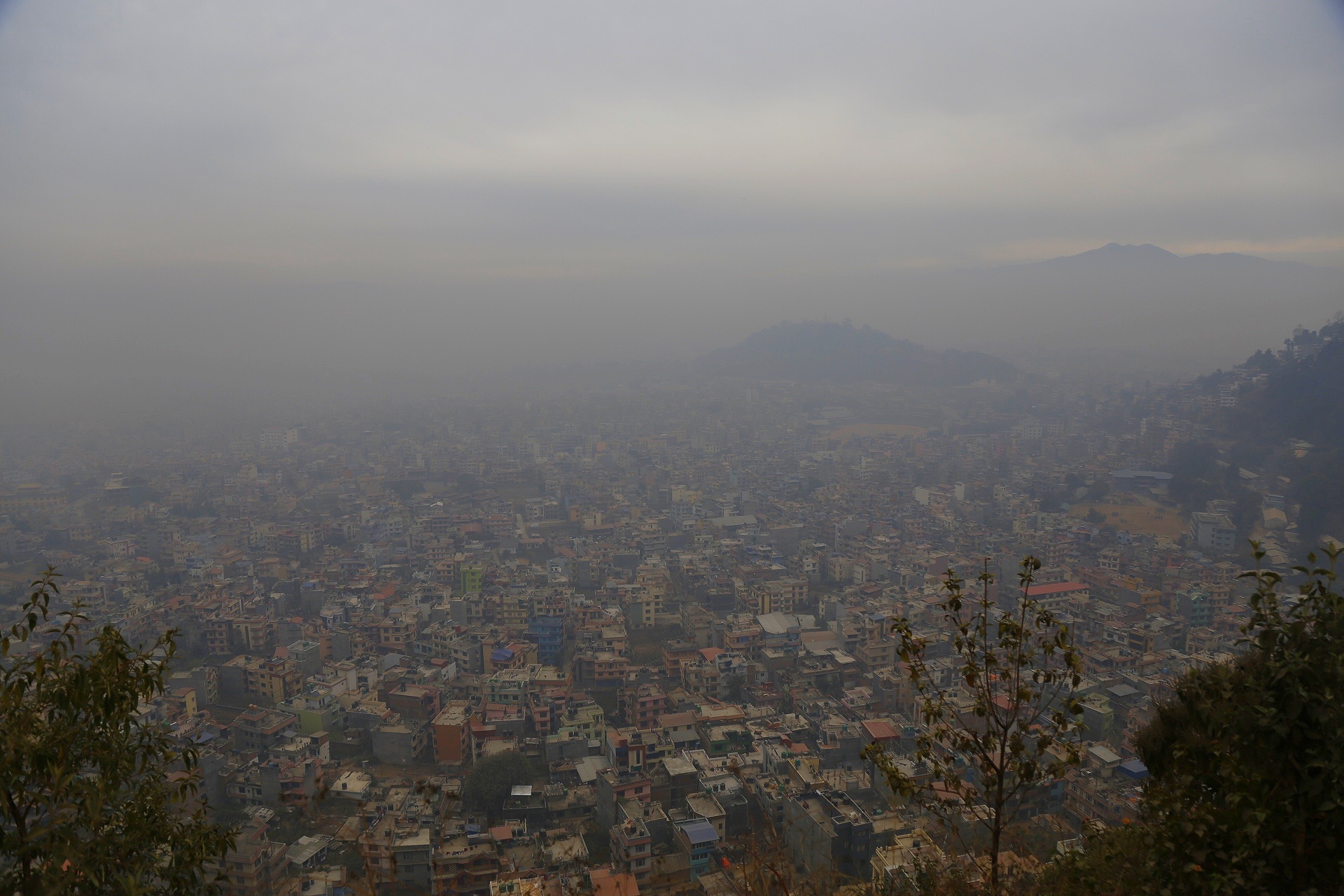
CCAC Launches Air Quality Management Exchange Platform to Combat Air Pollution

- CCAC launches an Air Quality Management Exchange Platform (AQMx) following UNEA-6 resolution to increase regional cooperation and action on improving air quality globally.
- The platform will guide city and national air quality managers on how to meet World Health Organization (WHO) Air Quality Guidelines and interim targets.
- Air pollution causes more than 8 million premature deaths annually and particularly affects poorer places and more vulnerable populations.
Paris, 5 September 2024 – Ahead of this year’s International Day of Clean Air and blue skies, the Climate and Clean Air Coalition (CCAC) has developed and launched an Air Quality Management Exchange Platform (AQMx) designed to help air quality professionals everywhere tackle air pollution. The platform is a one-stop-shop that provides the latest air quality management guidance and tools proposed to meet WHO Air Quality Guidelines interim targets.
Air pollution knows no borders, and with 99 percent of the global population breathing polluted air, the fight against it involves everyone. This silent and invisible killer is causing more than 8 million premature deaths per year, and often hitting the most vulnerable people in our societies hardest. Due to significant data gaps, the true toll of air pollution around the world is still unknown. Capacity gaps hamper efforts to tackle air pollution – a global climate and health crisis that requires urgent action.
The platform was developed in response to a resolution passed at this year’s United Nations Environment Assembly, where countries called for increased global cooperation to tackle air pollution by sharing best practices, tools, data, and information. Working directly with air quality managers, AQMx will help to address air quality management capacity gaps, notably with curated guidance across key themes, including on how to go about air quality monitoring, inventory development, and health impact assessments. This will allow decision makers to see a more complete picture of air pollution’s impact and leading to policies that accurately reflect public health needs on a global scale. For example, over a third of the population in Africa is unable to access air quality information.
“Access to a clean, healthy, and sustainable environment is a human right, not a luxury for those who can afford it. Tackling air pollution requires cooperation across administrative boundaries, across countries and across key sectors to implement tried and tested measures that cut pollution. With AQMx, we intend to close a capacity gap to create cleaner communities for us all,” said Martina Otto, CCAC’s Head of Secretariat, at the platform launch.
“Air pollution is nothing less than a public health emergency, and AQMx is a positive step in making evidence available to meaningfully tackle polluted air and meet WHO’s Air Quality Guidelines to protect people’s health around the world,” said Maria Neira, WHO’s Director of Department of Environment, Climate Change and Health.
“One common platform for air quality guidance, bringing together partners from governments, UN agencies, regional organizations, and civil society, has the potential to unlock health benefits for millions of people around the world,” said Jane Burston, the Clean Air Fund’s Chief Executive Officer and founder. “With less than 1 percent of international development funding currently spent on clean air initiatives, we hope AQMx helps to make the case for urgent investment into initiatives that tackle harmful air pollution.”
The platform will expand to allow regional and sub-regional communities to exchange knowledge about air quality management best practices.
Everyone has a role to play in the fight against air pollution, from national and regional governments, international organizations, NGOs, and the private sector. The launch of AQMx represents a unified approach in creating strong communities of practice that will fight for cleaner air for generations to come, to benefit people and the planet.
NOTES TO EDITORS
About the Climate and Clean Air Coalition (CCAC)
The UNEP-convened Climate and Clean Air Coalition (CCAC) is a partnership of over 182 governments, intergovernmental organizations, and non-governmental organizations. It works to reduce powerful but short-lived climate pollutants (SLCPs) – methane, black carbon, hydrofluorocarbons (HFCs), and tropospheric ozone – that drive both climate change and air pollution. It aims to connect ambitious agenda setting with targeted mitigation action within countries and sectors. Robust science and analysis underpin its efforts and bolstered by its trust fund, the CCAC has given rise to high-level political commitment, in-country support, and a range of tools that support the case for action and implementation.
About the UN Environment Programme (UNEP)
UNEP is the leading global voice on the environment. It provides leadership and encourages partnership in caring for the environment by inspiring, informing and enabling nations and peoples to improve their quality of life without compromising that of future generations.
For more information, please contact:
News and Media Unit, UN Environment Programme
Ava Bahrami, Communications Officer, Climate and Clean Air Coalition Secretariat at UNEP
SDGs, Targets, and Indicators Analysis
1. Which SDGs are addressed or connected to the issues highlighted in the article?
- SDG 3: Good Health and Well-being
- SDG 11: Sustainable Cities and Communities
- SDG 13: Climate Action
- SDG 17: Partnerships for the Goals
The article discusses the issue of air pollution and its impact on public health, cities, climate, and the need for global cooperation. These align with the goals of SDG 3, SDG 11, SDG 13, and SDG 17.
2. What specific targets under those SDGs can be identified based on the article’s content?
- SDG 3.9: By 2030, substantially reduce the number of deaths and illnesses from hazardous chemicals and air, water, and soil pollution and contamination.
- SDG 11.6: By 2030, reduce the adverse per capita environmental impact of cities, including by paying special attention to air quality and municipal and other waste management.
- SDG 13.1: Strengthen resilience and adaptive capacity to climate-related hazards and natural disasters in all countries.
- SDG 17.17: Encourage and promote effective public, public-private, and civil society partnerships, building on the experience and resourcing strategies of partnerships.
The article highlights the need to reduce premature deaths caused by air pollution (SDG 3.9), improve air quality in cities (SDG 11.6), address air pollution as a climate and health crisis (SDG 13.1), and promote global cooperation and partnerships to tackle air pollution (SDG 17.17).
3. Are there any indicators mentioned or implied in the article that can be used to measure progress towards the identified targets?
- Number of premature deaths caused by air pollution annually
- Percentage of the global population breathing polluted air
- Access to air quality information in different regions
- Investment in clean air initiatives
The article mentions that air pollution causes more than 8 million premature deaths annually and that 99 percent of the global population breathes polluted air. It also highlights the lack of access to air quality information in Africa. Additionally, it mentions the need for urgent investment in initiatives that tackle air pollution. These indicators can be used to measure progress towards the identified targets.
SDGs, Targets, and Indicators Table
| SDGs | Targets | Indicators |
|---|---|---|
| SDG 3: Good Health and Well-being | 3.9: By 2030, substantially reduce the number of deaths and illnesses from hazardous chemicals and air, water, and soil pollution and contamination. | – Number of premature deaths caused by air pollution annually |
| SDG 11: Sustainable Cities and Communities | 11.6: By 2030, reduce the adverse per capita environmental impact of cities, including by paying special attention to air quality and municipal and other waste management. | – Percentage of the global population breathing polluted air – Access to air quality information in different regions |
| SDG 13: Climate Action | 13.1: Strengthen resilience and adaptive capacity to climate-related hazards and natural disasters in all countries. | – Air pollution as a climate and health crisis |
| SDG 17: Partnerships for the Goals | 17.17: Encourage and promote effective public, public-private, and civil society partnerships, building on the experience and resourcing strategies of partnerships. | – Investment in clean air initiatives |
Source: unep.org







